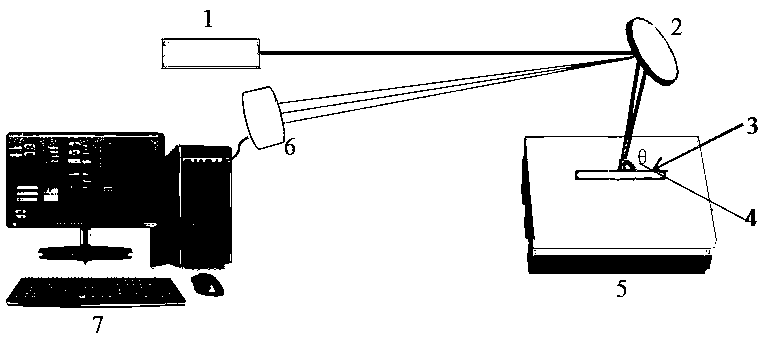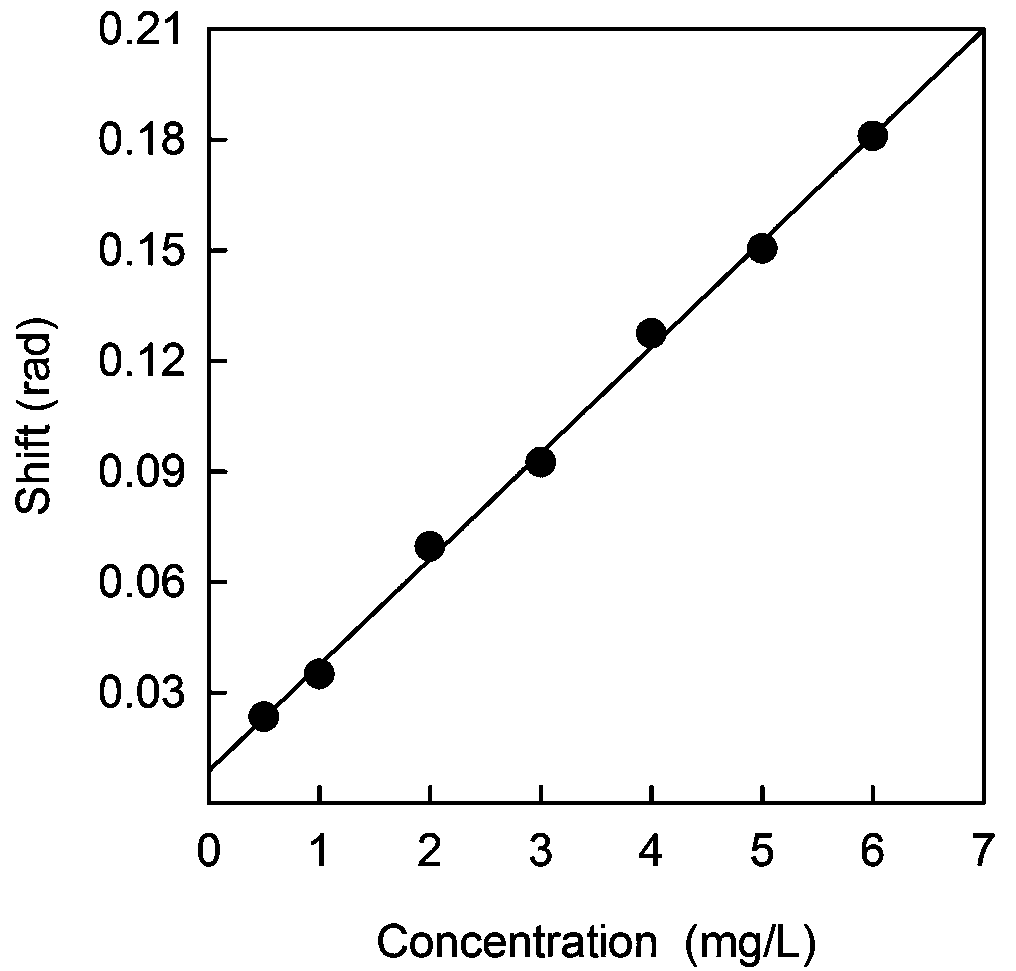Biochemical quantitative detection device and method based on photo-thermal interference of scattered light
A photothermal interference and detection method technology, which is applied in the direction of measuring devices, color/spectral characteristic measurement, and analysis through chemical reactions of materials, can solve the problems of external light source interference in pictures, multiple false positive results, etc., and achieve greater The effect of laser intensity, small sample volume, and improved detection accuracy
- Summary
- Abstract
- Description
- Claims
- Application Information
AI Technical Summary
Problems solved by technology
Method used
Image
Examples
Embodiment 1
[0034] Quantitative detection of nitrite ion:
[0035] 1. Preparation of standard solution: Dissolve sodium nitrite in deionized water to prepare NO concentrations of 0.5, 1, 2, 3, 4, 5 mg / L 2 - Standard solution; preparation of color developer: Take 0.0861 g of sulfanilamide, 0.634 g of citric acid and 0.0259 g of naphthaleneethylenediamine hydrochloride and dissolve them in ultrapure water at 45 ℃ ~ 50 ℃ in sequence, and stir until completely dissolved.
[0036] The standard solution and the chromogenic reagent were fully mixed and reacted in the centrifuge tube at a ratio of 5:1. After standing for 10 min for color development, 20 μL of the solution was passed into the sample area of the microchannel.
[0037] 2. Selection and installation of detection device models: such as figure 1 As shown, choose the laser 1 that is complementary to the color of the chromogenic agent. In this example, a 532 nm all-solid-state laser is selected. A beam of light is emitted by the l...
Embodiment 2
[0042] Quantitative detection of divalent copper ions:
[0043] 1. Standard solution: Dissolve copper nitrate in deionized water to prepare Cu with concentrations of 0,0.5,1,2,3,4,5,10 mg / L 2+ Standard solution; preparation of chromogen: Weigh 100 mg 2,9-dimethyl-1,10-phenanthroline (C 14 h 12 N 2 1 / 2H 2 o) dissolved in 100 ml methanol (5.7). This solution is stable for one month. The prepared chromogen was stored in a 4ºC refrigerator away from light. Hydroxylamine hydrochloride divalent copper ion is reduced to cuprous ion, and in neutral or slightly acidic solution, cuprous ion reacts with 2,9-dimethyl-1,10-phenanthroline to form a yellow complex.
[0044] 2. Detection device design: the used laser wavelength is a blue light laser of 457nm, and others are consistent with the detection device in Embodiment 1, such as figure 1 shown.
[0045] 3. Obtain the backscattering interference pattern: use the CCD fixed on the optical platform, set the CCD to the continuous ...
PUM
| Property | Measurement | Unit |
|---|---|---|
| wavelength | aaaaa | aaaaa |
Abstract
Description
Claims
Application Information
 Login to View More
Login to View More - R&D
- Intellectual Property
- Life Sciences
- Materials
- Tech Scout
- Unparalleled Data Quality
- Higher Quality Content
- 60% Fewer Hallucinations
Browse by: Latest US Patents, China's latest patents, Technical Efficacy Thesaurus, Application Domain, Technology Topic, Popular Technical Reports.
© 2025 PatSnap. All rights reserved.Legal|Privacy policy|Modern Slavery Act Transparency Statement|Sitemap|About US| Contact US: help@patsnap.com



